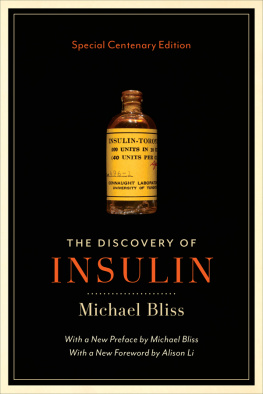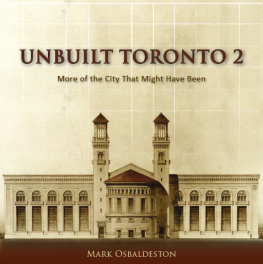HALFWAY UP PARNASSUS
Halfway up Parnassus is a personal account of the University of Toronto with particular emphasis on the period when Dr Bissell was its president, from 1958 to 1971. The first half of that period was the flowering of the old, self-confident university, with its established patterns of government, and its untroubled constituents. The second half saw the slow, powerful emergence of a new university, uncertain of itself and its role, seeking to find a form for democratic aspirationsnot, however, without some dramatic confrontations with left-wing students. Nowhere in Canada was the process more sharply defined and more dramatically expressed than at the University of Toronto. This book records that process from the point of view of a major participant. It is also intended as a series of portraits of major academic figures and as an intimate recollection of a society that is passing away.
It is not a philosophical book about education, but a human documentan attempt to render the tone of academic society, and in this account Dr Bissell has combined, to great effect, autobiography, descriptive narration, and historical analysis. The book will be of interest to Canadians concerned about our intellectual and cultural life, and to academic societies everywhere.
CLAUDE BISSELL received his BA and MA from the University of Toronto and his PHD from Cornell University, both graduate degrees in English. He taught at Cornell and the University of Toronto and was professor of Canadian Studies at Harvard for a year, but his primary function between 1948 and 1971 was as university administrator. From 1956 to 1958 he was president of Carleton University and from 1958 to 1971 president of the University of Toronto. During this time he also held a number of national and international positions in the academic world: as chairman of the Canada Council, president of the National Conference of Canadian Universities and Colleges, president of the World University Service of Canada, and chairman of the Carnegie Foundation for the Advancement of Teaching. He has edited a number of books, and is the author of The Strength of the University. Dr Bissell is now one of five University Professors at the University of Toronto.

Halfway up Parnassus
A PERSONAL ACCOUNT OF THE
UNIVERSITY OF TORONTO
1932-1971
CLAUDE BISSELL

University of Toronto Press 1974
Printed in Canada by
University of Toronto Press, Toronto and Buffalo
ISBN 0-8020-2172-7
LC 74-82288
Photo, page ii
(installation as president of the
University of Toronto,
October 24, 1958)
by Ken Bell; courtesy
University of Toronto
News Bureau
FOR CHRISTINE
Contents
Preface
This book is a personal account of the University of Toronto from 1932 to 1971. It is personal in a number of ways. The dates enclose the years of my active association with the university: I entered the University of Toronto as a student in 1932, and I concluded my term as president in 1971. I have thus written about a university that I knew at first hand (except for four years at Cornell, one year at Harvard, and three years in the Canadian army.) Of course, I knew it far more intimately during the period of my presidency, 1958-1971, and it is these years that are chronicled in some detail.
It is personal, too, in the sense that I have written about the university from my own point of view. I have not sought the comprehensiveness and objectivity of the historian. My account is highly selective, and describes only those events and those areas of the university in which I had a special interest. The book is unapologetically prejudiced and deeply biased; but it is, as far as I could make it, scrupulously accurate in its factual record. I have checked my memory against official documents, letters, and a journal that I kept during most of the period.
Finally, it is personal in the sense that it places great importance on individuals, and strives to present them as human beings and not as political cartoons. Histories of universities are usually dull, because they avoid dealing with what alone can make them interesting the colourful, unconventional, opinionated men and women who determine policies and create traditions.
My arrangement is broadly chronological, although, since the book deals in major themes, I have ranged back and forth in time in each chapter. But there is a general progression. There is a general theme too the change that took place in the sixties from the feudalistic, ordered university that still whispered from her tower, the last enchantments of the middle ages to the new university that has rejected much of the past, without as yet fixing upon a distinctive form.
I apologize to the many friends and associates whom I do not mention as well as to those whom I do. Behind all the events I record lie the loyalty and dedication to the University of Toronto of hundreds of colleagues, both within and outside the university. This is the ultimate grace that no words can encompass.
I am grateful to Professor William Walsh of Leeds University, who read and criticized early drafts of the opening chapters; and to my colleague, Professor Robin Harris, with whom for many years I have discussed the ideas and events in this book.
Toronto, March 1974 | CLAUDE BISSELL |
|---|
HALFWAY UP PARNASSUS
1 / The Great Good Place
When I came to the University of Toronto as a freshman in 1932, it was like all Canadian universities, an elitist institution in the sense that admission was restricted to a few narrowly designated groups. The proportion of college-age young people going to university had not changed greatly since the turn of the century, and in 1932 did not exceed four per cent. One could distinguish three principal groups of undergraduates: the first was made up of the children of families that had an established tradition of university attendance, although never for more than two previous generations; the second was made up of the children of families that had prospered conspicuously in the last twenty or thirty years, often immigrant families that had come to Canada only a short time before; the third group was made up of scholarship winners drawn mainly from middle class families of modest means with no previous university associations. The three groups were not exclusive, and students from either of the first two often held a scholarship, thereby reinforcing the process of social and economic selection.
I belonged to the third group. My parents put education only slightly below religion in their hierarchy of values, but to them education did not encompass the university. It was thought to be a special area reserved for the children of the wealthy and a few unusually brilliant students. I was not free to decide to go to university; the decision was forced upon me, so to speak, by the winning of a provincial scholarship. This eventuality had not been anticipated. My high school Runnymede Collegiate Institute was a new one in what was then the suburbs, with no tradition of scholarship, glorying chiefly in a rapid rise to football fame. The school had no special scholarship class, as there often was at the older urban high schools. Indeed, the school authorities had forgotten to submit a scholarship application on my behalf. A late application was accepted, but it seemed to me at the time to be of little significance, since I was sure that I was not a serious competitor. In the school I had a high academic ranking but this, I thought, meant little in the wider provincial context.
Next page





